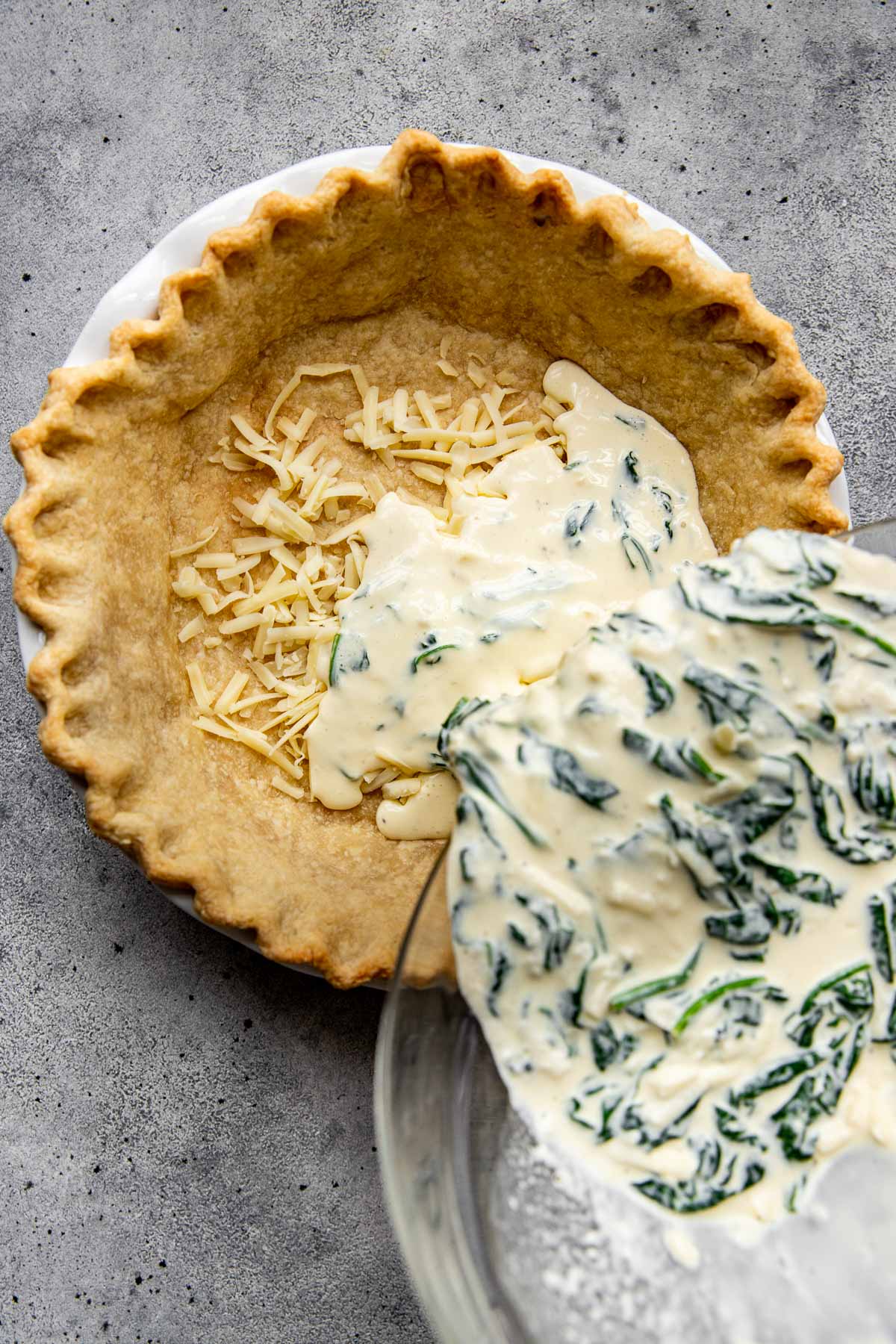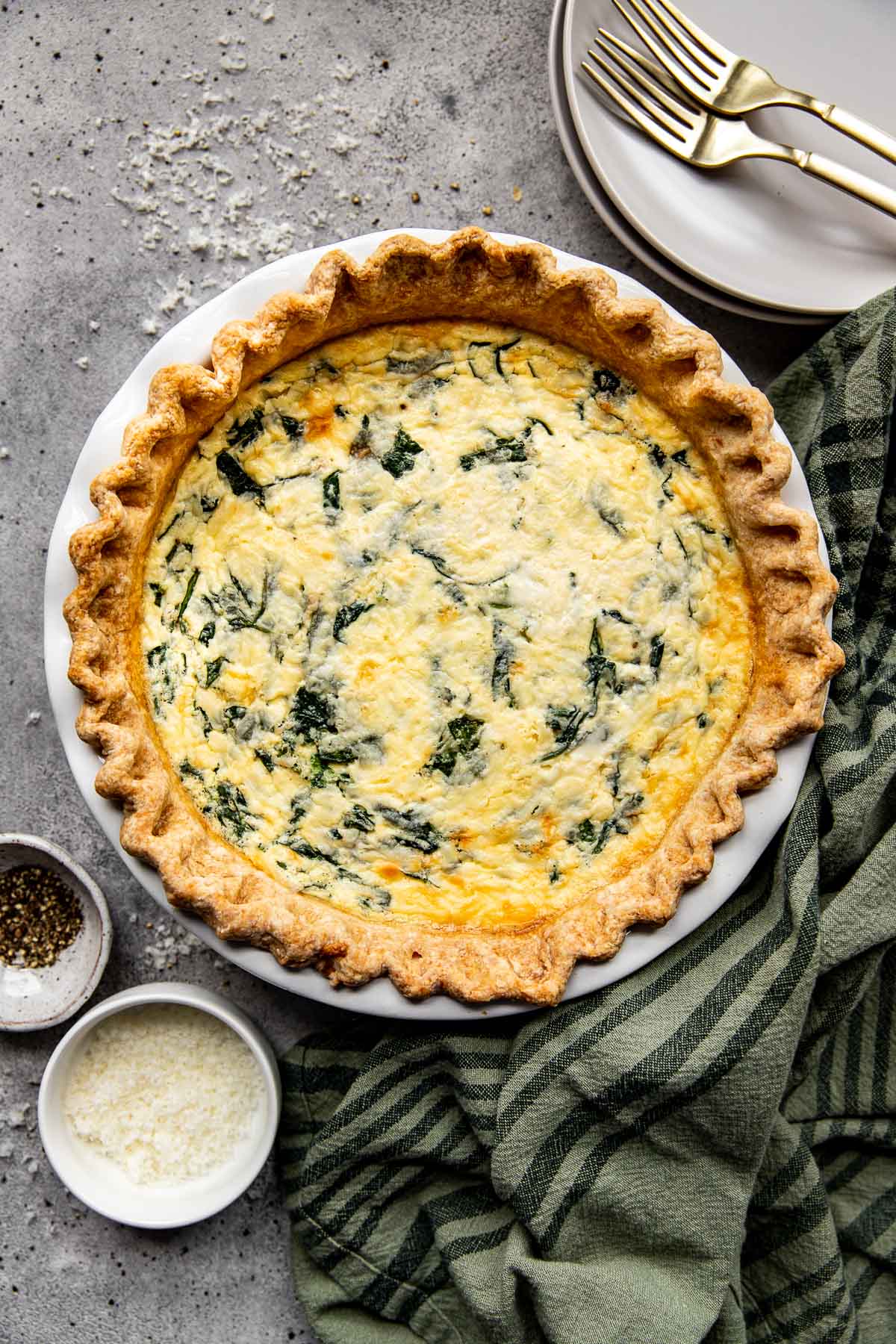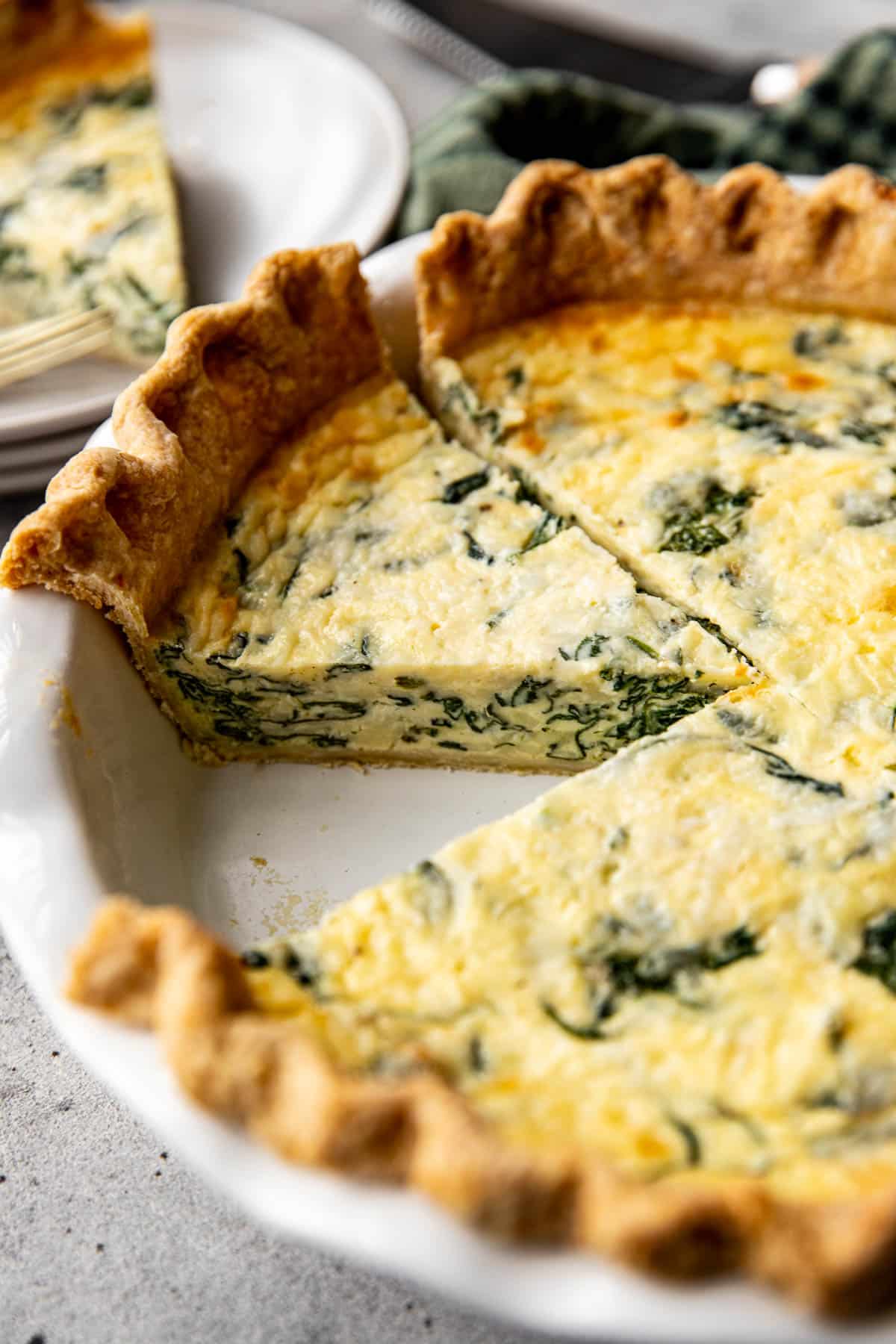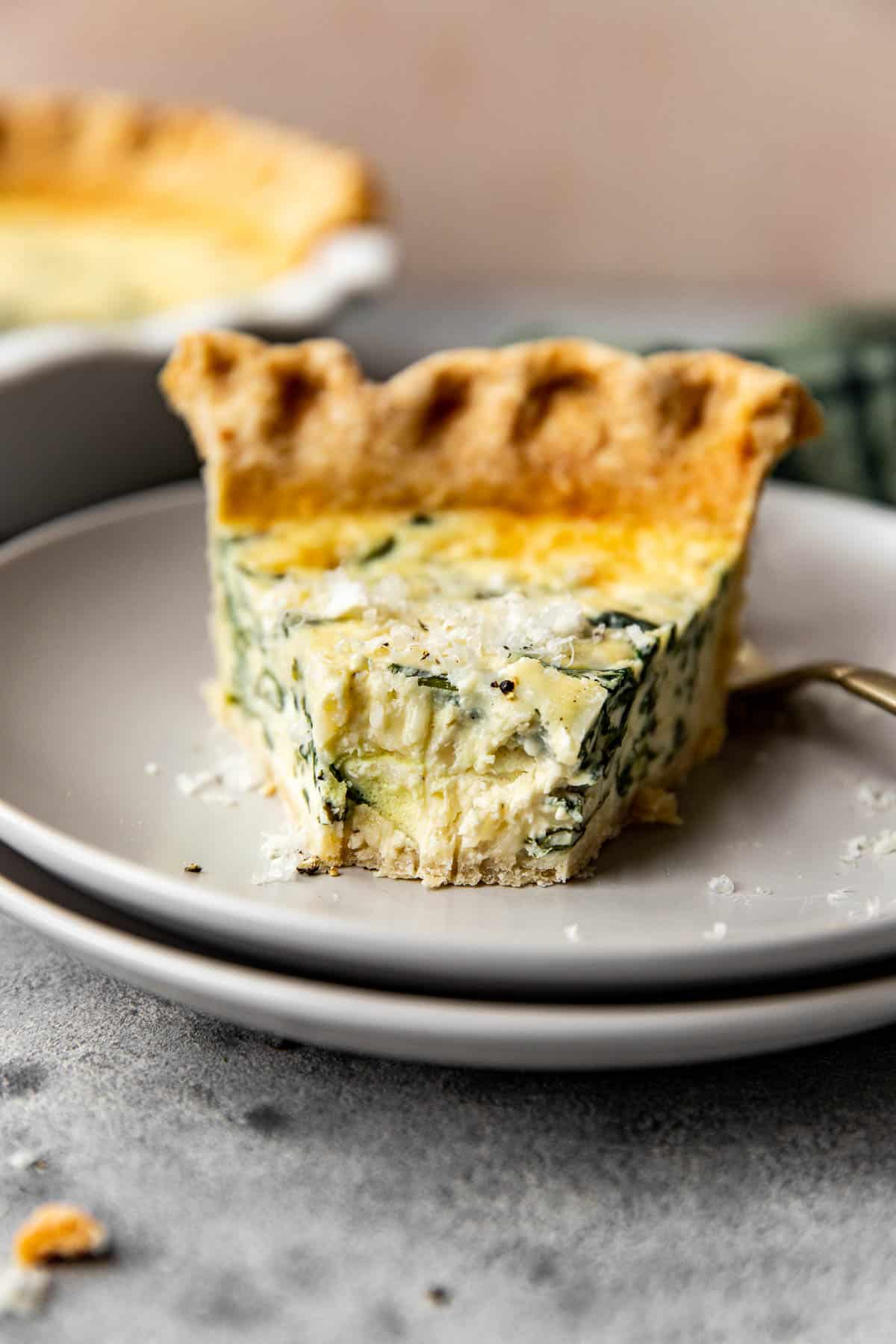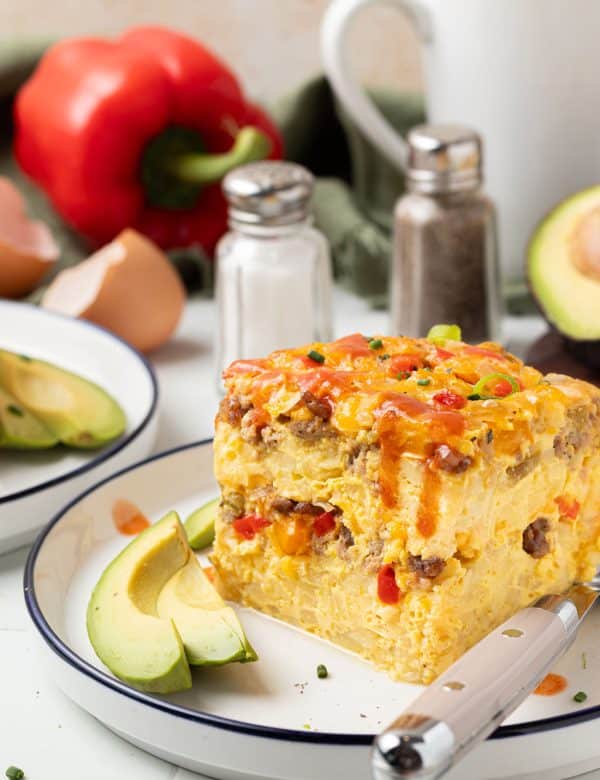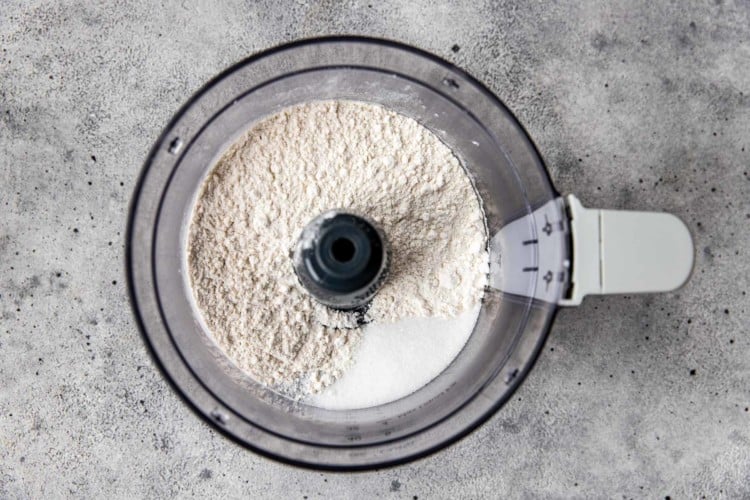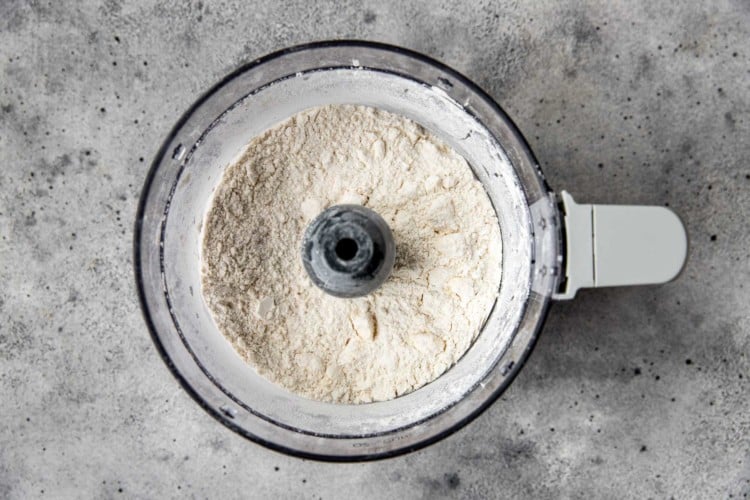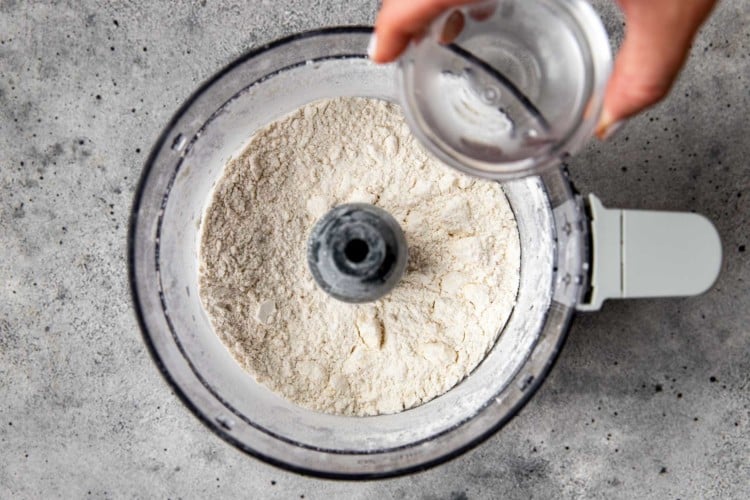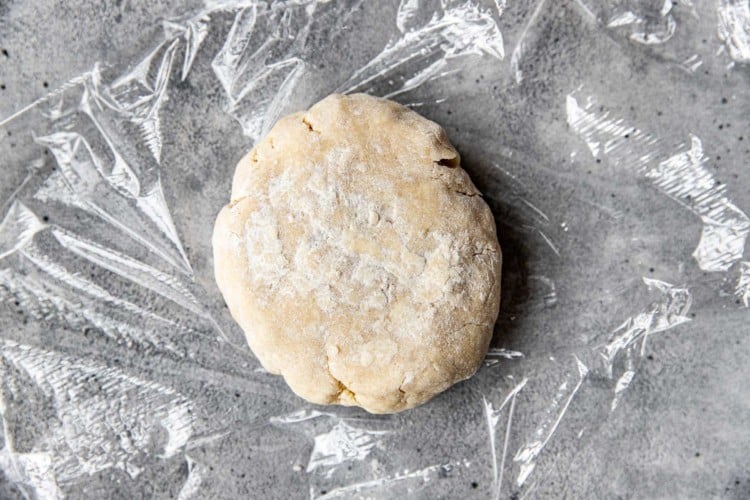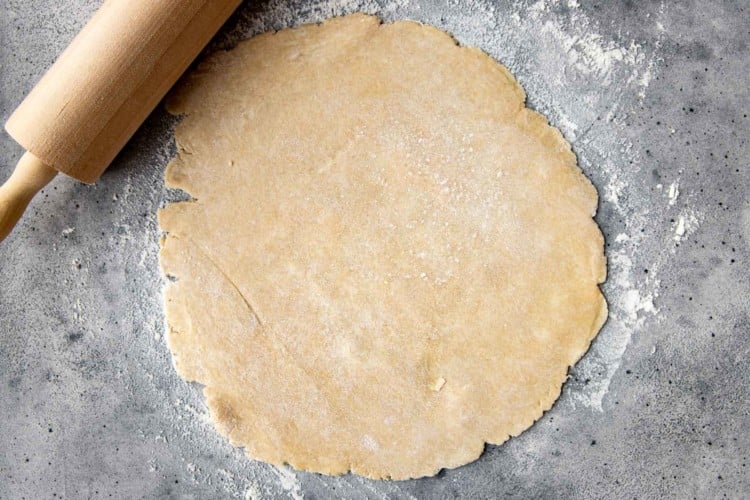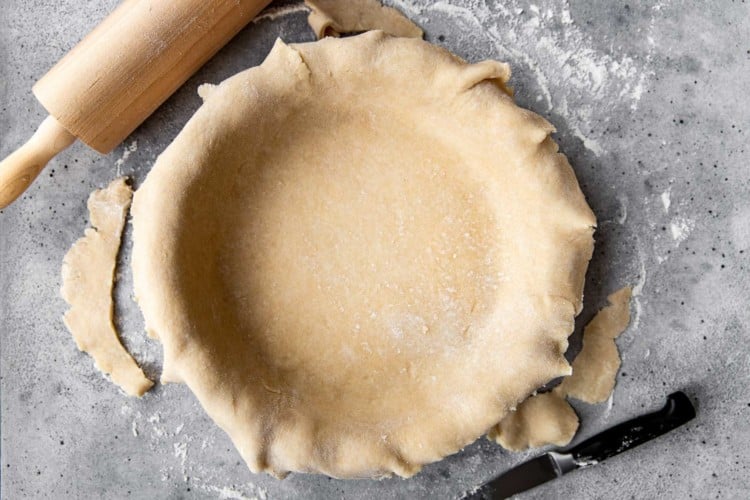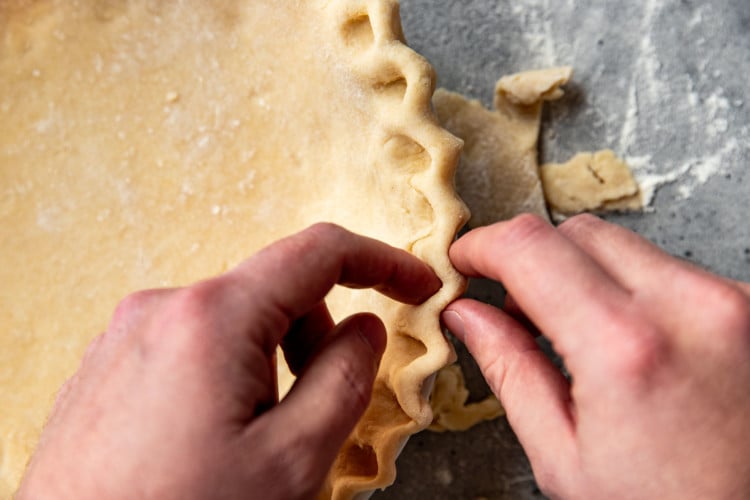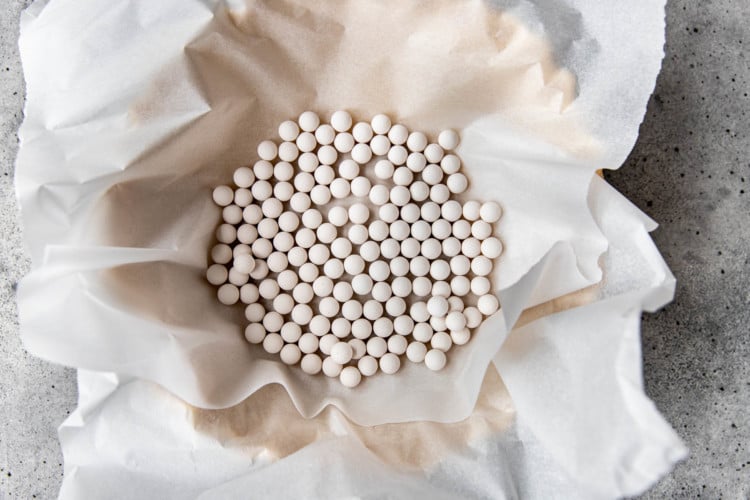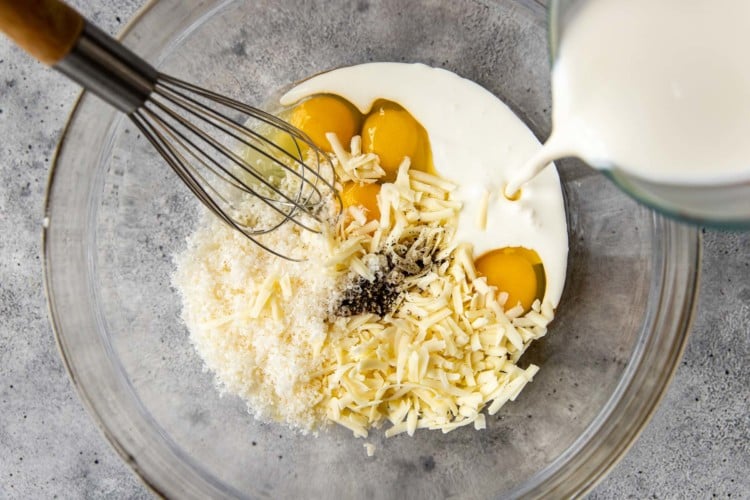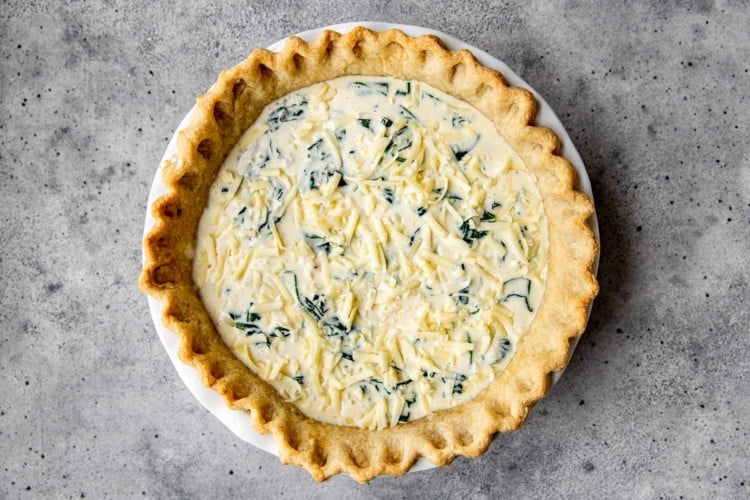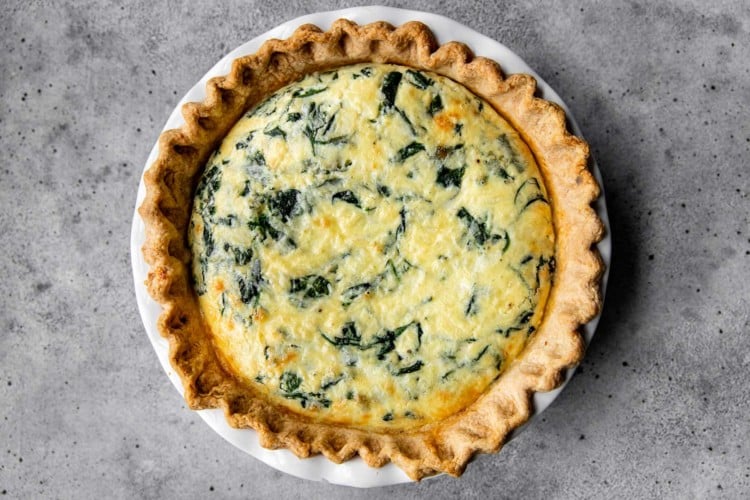It combines the richness of eggs and cheese with the fresh spinach, all encased in a flaky, buttery crust. The crust is pre-baked to achieve a nice crisp texture and it’s the perfect vessel for the quiche’s filling. And before I get any further, you can also purchase a good quality pre-made pie crust to streamline the process of making this quiche. Just be sure to check the package of your store-bought crust to see if you need to bake it first. Some manufacturers provide specific instructions for their product, including whether or not to pre-bake the crust for a wet filling like quiche. And it’s just so pretty, just look at these photos! The golden brown crust, the vibrant green of the spinach, and the creamy yellow of the egg filling make Quiche Florentine just soo visually appealing, which makes this dish a great option to serve to guests or for special occasions.
For the crust: all purpose flour, cold butter, kosher salt, granulated sugar, and cold water (or cold vodka). Eggs: Eggs are a key component of the filling. They help bind the other ingredients together and give the quiche its custard-like texture when baked. Heavy cream: Heavy cream or half-and-half is often used to make the filling rich and creamy. It adds a luscious texture to the quiche. Fresh spinach: Spinach is the “Florentine” part of the quiche, and it’s typically sautéed or blanched before being added to the filling. It brings a vibrant green color and earthy flavor to the dish. In this recipe, the spinach will get sautéed before you fold it into the filling mixture. Cheese: I like to use freshly grated Parmesan and Extra Sharp White Cheddar Cheese. You can also use Swiss cheese or Gruyère. Seasonings: Various seasonings like salt, pepper, and sometimes a pinch of nutmeg are used to enhance the flavor of the quiche.
Use a metal or ceramic pie plate. Glass pie pans are more slippery than metal or ceramic pie plates. Pies in glass pie plates tend to shrink more, because it’s easier for the pie dough to slide down the sides. Chill before rolling: it’s important to let it rest in the refrigerator for at least an hour or up to 2 days. This step allows the gluten to relax and the fat to chill, which helps minimize shrinking. Chill before filling: after you flute the edges, refrigerate the dough for 30 minutes. (A slower, gentler chill in the fridge is preferable, rather than the freezer). This will help the fat in the dough re-solidify after you’ve worked with it and allow the gluten in the dough relax. Weigh down the dough: once the dough is lined which parchment paper, use dried beans or ceramic pie weights hold the dough in place and ensure it keeps its shape before you blind bake it.




